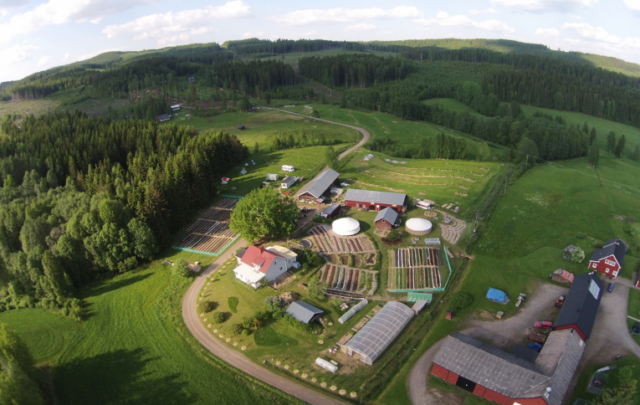 What? Don’t know what bunkty means? Now you know how I feel about the word “sustainable.” My paper towels separate into smaller segments than they once did. It’s sustainable! These potato chips arrive in a box that says SUSTAINABLE in big letters on the side. I’m eating green! When I’m in a hotel, I hang the towel back up rather than throw it on the floor (would I ever do this anyway?) and the placard says I’m being sustainable. Can it be that easy? I claim that not one among our host of 7 billion really knows what our world would look like if we lived in a truly sustainable fashion. Let’s try to come to terms with what it might mean.
What? Don’t know what bunkty means? Now you know how I feel about the word “sustainable.” My paper towels separate into smaller segments than they once did. It’s sustainable! These potato chips arrive in a box that says SUSTAINABLE in big letters on the side. I’m eating green! When I’m in a hotel, I hang the towel back up rather than throw it on the floor (would I ever do this anyway?) and the placard says I’m being sustainable. Can it be that easy? I claim that not one among our host of 7 billion really knows what our world would look like if we lived in a truly sustainable fashion. Let’s try to come to terms with what it might mean.
I think most would agree that the rapid depletion we currently witness in natural resources and services, climate stability, water availability, soil quality, and fisheries—to name a few—suggests that we do not live sustainably at present. We can not expect to keep up our current practices with 7 billion people in this world without some major changes.
Sustainability, in Numbers
I have made the case in the past that growth—either in physical measures like population, energy use, etc., or in economic terms—cannot continue indefinitely in our finite world. This post rounds out the trilogy.
If we think about the fact that growth must one day end, we realize that an ultimate steady state would tend to reduce income inequalities. Given growth, we have little trouble rationalizing inequality, since those at the bottom have growth opportunity ahead of them. As long as the plight of the poor improves with time, the well-heeled among us can feel justified in living large. But without a growth argument, it would become morally awkward to perpetuate the inequality of two people contributing comparable time and energy to humanity’s steady-state upkeep.
Our dream is that the poor of the world can improve their standard of living toward first-world norms. The U.S. uses about 25% of the world’s annual energy resource (which I will use as a proxy for standard of living) while harboring about 5% of the population. Thus the average U.S. citizen uses energy at five times the rate of the average global citizen. For everyone to get where we are today in the U.S. would require a five-fold increase in the total energy expenditure of the planet. Make that 7-fold allowing the population to swell to 10 billion. And even that requires a freeze in growth at the top end (the U.S.). Since that’s not about to happen—at least not voluntarily—we should call it a ten-fold increase for everyone to get what they want.
If we are not sustainable today, how could we possibly achieve sustainability under the burden of a ten-fold increase in scale?
You may object that Americans don’t eat five times more food than the average Earthling today. True enough, but we eat a meat-rich diet that consumes much more land, grain, and energy than would a simpler diet by something close to that same factor. You might also object that Americans use energy at an obscene rate, and that this should not be the goal for the rest of the world. I won’t argue. This post is aimed at those who see nothing wrong with such an approach.
Yeah, But… and Other Clever Dodges
Might we not improve our efficiency in tandem with development so that standards of living could improve at a constant energy/impact? This is the subtext behind many of today’s sustainability drives. We just need to do things better and smarter and we’ll be fine.
I refer you to the post on the necessary end to economic growth, in which I demonstrate that efficiency improvements might gain us only a factor of two (taking about 70 years to do this at historical rates of efficiency improvement of 1% per year). And we have to watch the pernicious Jevons’ paradox, whereby efficiency improvements in the past have tended to lead to a greater expenditure of energy than before the “improvements.” But I’m feeling generous, so I’ll knock our prescribed ten-fold increase down to a factor of five to allow for efficiency improvements and other oversights.
So in the absence of anyone being able to define how we turn today’s unsustainable practices into sustainable ones at five times the present scale, you’ll forgive me if I remain skeptical. If we could demonstrate the ability to seize control of the current scale and live sustainably today, I might grant that we have some hope of managing a similar trick at five times that scale. Instead, we intend to race headlong into a bigger tomorrow without proving ourselves capable of handling today’s world.
 A child who wants a pony might first be asked to demonstrate that he or she can feed and take care of a gerbil, then graduate to a kitten, a puppy, a goat, and finally a pony. Currently, we’re not taking care of our gerbil, so we have not demonstrated that we deserve a pony. Perhaps we also don’t deserve to be brandishing the term “sustainable” for chicken-scratch contributions.
A child who wants a pony might first be asked to demonstrate that he or she can feed and take care of a gerbil, then graduate to a kitten, a puppy, a goat, and finally a pony. Currently, we’re not taking care of our gerbil, so we have not demonstrated that we deserve a pony. Perhaps we also don’t deserve to be brandishing the term “sustainable” for chicken-scratch contributions.
Sure, hanging the towel back up on a multi-day hotel visit is definitely a step in the right direction, and I’m all for it. But if we don’t focus on the big picture, these little acts are mere distractions.
“Yeah, but don’t they add up?” Can a bunch of 1% solutions produce a 100% change (or the 500% change we seek)? Maybe in the same way that if you strapped enough gerbils together, you might get something you can ride like a pony. I think I just invented a new sport.
Blowing Through Our Inheritance
All of this would bother me less if we were at least living within our budget presently. But we are tearing through one-time resources like mineral deposits, aquifers, and the big one: fossil fuels. The easy stuff is grabbed first, and it gets harder and harder as time passes.
In fossil fuels, we found the Earth’s solar battery—charged over millions of years—and we promptly hooked up Las Vegas to help us burn through the resource in mere centuries. In fact, our social and political structures have typically worked to maximize the rate of growth, which has the effect of blowing through resources as fast as may be managed—albeit with an eye toward practical efficiencies of the day. I have always found it compelling to look at a graph of fossil fuel use over a very long time span. This puts it in perspective as a towering blip in the human experience. It’s only schematic, but in case you’re interested, I put the peak at 2050, with a width at the half-max point of 235 years (Gaussian σ = 100 years).

On a long view, the fossil fuel age is brief, and we cannot be certain about the nature of our existence after this era.
We know that the era before fossil fuels used firewood, animals, and human (often slave) labor as sources of energy. Some supplemental energy came from wind, water, and animal fats as well. In most cases, this arrangement was by definition sustainable in the true sense: living off of the yearly energy income provided by the sun. Even then, deforestation and hunting some animals to extinction (or to scarcity) still happened. Looking at the symmetry inherent in the graph, it begs the question of whether this same existence lies in store for us on the right-hand side. Our accumulated scientific knowledge has the potential to break that symmetry, but only if coupled with collective wisdom. The future is not yet written, and may not care what we imagine could happen.
Meanwhile, we sit roughly at the position of the star in the figure. We’re living large and feeling pretty heady about our cleverness and the promise of the future. Up, up, up! That’s the world we’ve known. Surely it will always be so, now that we finally got smart.
I love the metaphor—expressed in the documentary, The Corporation—that early attempts at flight always failed because the flying contraptions were not built on the aerodynamic principles of sustained flight. Nonetheless, the pilot wannabe would launch off the cliff and momentarily feel the wind in their hair, and indeed be airborne for some time—feeling magnificent. But then came the inevitable crash. Likewise, a civilization that is not built on a foundation of sustainable practices is doomed to over-reach and fail. Yet today we feel the wind in our hair, and it feels pretty good. It makes us think we can do anything, and that we’re too clever for words. But we have the same brains we had a few thousand years ago. What’s changed is a windfall of surplus energy.
So the big question is: can we transition to a truly sustainable lifestyle for the long haul at an energy level akin to what we enjoy today—or even several times higher? No one knows the answer, and thus a true understanding of “sustainable” remains elusive. The following graph schematically shows what a level-off at the energy scale of peak fossil fuels (this century) would look like.
The “go green” function is a logistic curve with an inflection at 1965: very similar to the best-fit logistic for the U.S. energy historical data.
This figure merely illustrates that we have to find a full-scale replacement for fossil fuels in a relatively short period, and sustain it indefinitely. Today, only 15% of our energy comes from non-fossil origins—almost all of it hydroelectric and nuclear. Only hydroelectric is renewable (ignoring the detail that dams silt up), but all the main prizes have been taken, so that this sector generally cannot be expanded by even a factor of two. Uranium limits nuclear fission to short-term (< 100 years), unless proliferation-prone breeder programs are adopted, or fusion pans out in time to make a difference. Of course solar and wind could become more prominent. But all these are primarily useful for electricity, and tend to be expensive or difficult options. The freebee days will end, and we’ll have to work harder to satisfy our energy demand year by year. Future Do the Math posts will dissect the possibilities in greater detail.
We have no historical precedent to tell us whether we can pull off the sustainable right-hand-side of the graph. Will we pull together a technological solution, or disappoint ourselves with a return to muscle power and firewood? It seems a preposterous question, and many readers are now steaming with indignation—much like we might expect a kid to throw a tantrum when told that they can’t have a pony. Are such readers perturbed because they have a crystal-ball vision of the unwritten future and how things will play out? I’ll pretend I’m from Missouri (borders on true), and demand: “show me!”
But I’m not done yanking chains yet. Leveling off near today’s global rate of energy use spells an eventual decline in the U.S. standard of living by a large factor. Remember our premise at the beginning: if the goal is to pull up the world population to American standards of living, we need something more like a factor of five increase in scale. And that’s after taking a factor of two haircut to account for efficiency improvements achieved in tandem. What does this look like?
I fittingly pick a “blue sky” color to represent this state of affairs, again using a logistic function, this time having an inflection in 2110. If anyone thought the green portion looked hard, the blue piece is a doozy. It makes the remarkable fossil fuel age look like some insignificant anomaly. Many people react by saying “exactly so,” believing that fossil fuels are merely the kick-start for something bigger, something grander. Better than a pony, even. We’ll be free of the infantile shackles of the Earth and expand into the limitless void. We’ve seen it in numerous TV shows and movies—what more evidence do we need? I’ll have to address this issue in a future post. For now, let’s focus on the here and now, and the serious challenges this century hurls at us as we are weened from the lifeblood that started us on our industrial tear.
My skepticism that we can make it to the 5× sustainable future has led me to anticipate that Americans will have to reduce their energy, material, and dietary consumption. I have reacted by modifying my own behavior, and in so doing have proven to myself that the challenge is one that can be met at a personal level while maintaining a less-than-primitive lifestyle. Choices in diet, indoor temperature, transportation, hot water use, household appliances, etc. have reduced my home impact by a factor of four or more, and this gives me great hope. But I am cheating by riding on top of an energy-rich society. It is not as clear that an entire civilization can ratchet down by a similar factor and maintain today’s basic functionality.
Why Now is Special
Energy is not the only dimension to this problem. From a purely energetic point of view, we have enough solar input to allow sustained energy use at high rates (though not sustained growth). That’s the good news. But we would still strain the throughput of materials harvested from the planet. Pollution will continue to pile up; arable land will be lost to erosion, desertification, salinity increase, and exhaustion of ancient aquifers; fisheries will collapse; important metals will become ever harder to find and extract; we will learn too late that species driven to extinction by climate change and other human impositions are actually vital to our well-being. No one knows for sure what the ultimate carrying capacity of the Earth is: many estimates indicate that we have already exceeded it. And it is distressing that we do not have a plan for living within our means at today’s level of industrial activity, let alone a 5× expansion.
The basic point is that we are entering uncharted territory. This toothless statement has been true at every point in history. But I believe that this century is the one in which we must confront the thorniest issue ever presented to the human race. This moment is special because we have dramatically built up our population, technology, science, medicine, and democratic institutions as a direct result of vast amounts of surplus energy stemming from a one-time resource. The fossil fuel experience has made us dangerously confident about our cleverness and dominance over nature. What makes this century special, then, is that we will have to cope with a diminishing supply rate of the resource that has been of paramount importance to our high-tech existence.
Some will point out that folks 200 years ago could never have predicted the marvels of today, and that we should adopt a similar humility about the future. Fair point. We should also not assume that we won’t be protecting our food supplies by clubbing each other over the head with half-gnawed bones 200 years from now. Who, at the height of the fossil fuel age could have predicted such a reversal of fate?! Did you see that coming? I’m all about exercising humility in our prognostications of the future, but this cuts both ways. Currently, we see an asymmetry in the glorious vs. disastrous prediction score. I’m merely providing counterbalance by pointing out that our recent, rapid ascent provides a compelling reason as to why this asymmetric “limitless” outlook might be expected at this moment in history (look at the star on the fossil fuel graph).
We talk with confidence about the pony we will one day own (eventually equipped with warp drive upgrade), but our gerbil is meanwhile gasping under our neglect. And the rush we have experienced on our fossil fuel binge has made us a bit loopy. Only by looking at the sober possibility that we risk reverting to a low-tech existence after the fossil fuels are spent can we make honest plans for our future. Those honest plans may well involve a substantial ratcheting-down of the lifestyle to which we have become accustomed. And that same honesty suggests refraining from using the term “sustainable” until we better understand what it actually means. I’m more attracted to the words: possible, practical, preservation, and price—oh—and pony.





